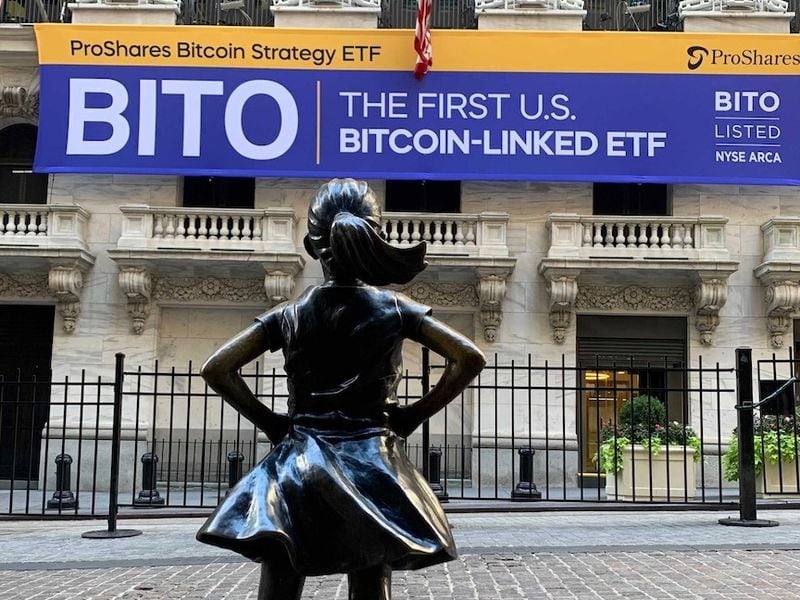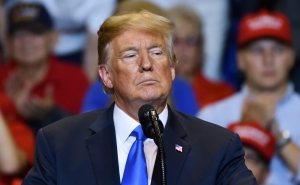First Mover Asia: Bitcoin Holds Steady Near $27K as Investors Weigh Debt Ceiling Developments
Good morning. Here’s what’s happening:
Prices: Bitcoin at $26.8K maintains its debt-ceiling holding pattern.
Insights: Crypto as a hedge? The citizens in two large, emerging countries and other major significant economies seem to be turning to digital assets as their currencies struggle.
Boring Bitcoin Slumbers Near $27K
Bitcoin held comfortably in its most recent range on Monday as investors weighed the latest developments in the U.S. debt ceiling stalemate.
The largest cryptocurrency by market capitalization was recently trading at about $26,866, up 0.4%. BTC has hovered between $26,500 and $27,500 for almost two weeks, according to CoinDesk data, amid macroeconomic uncertainties, including concerns that U.S. President Joe Biden and House leadership would be unable to reach an agreement about raising the country’s debt limit.
“Crypto traders are not sure how Bitcoin will behave throughout the next several days of debt ceiling negotiations,” Edward Moya, senior market analyst for foreign exchange market maker Oanda, wrote in a note.
Moya added: The risk of default is very small but if it were to happen, that could feel like an uppercut to risk appetite, which would send cryptos sharply lower. Bitcoin appears content to trade near the lower boundaries of its recent trading range between $26,500 and $30,000.”
Since 1960, the government has increased the debt limit 78 times, but the current, charged political environment has raised anxiety about the willingness of lawmakers to work together.
In a letter to Speaker of the House Kevin McCarthy (R-Calif.), U.S. Treasury Secretary Janet Yellen reiterated a May 15 warning that without an agreement, “the Treasury Department would be unable to satisfy all the government’s obligations by early June, and potentially as early as June 1.”
“We have learned from past debt limit impasses that waiting until the last minute to suspend or increase the debt limit can cause serious harm to business and consumer confidence, raise short-term borrowing costs for taxpayers, and negatively impact the credit rating of the United States,” Yellen added. “We have already seen Treasury’s borrowing boats increase substantially for securities maturing in June.”
Ether was recently changing hands at about $1,820, up 0.8%. The second largest crypto in market value has been similarly range-bound between $1,750 and $1,850 over the past two weeks. Other major cryptos were largely in the green, albeit paler shades, with TRX and AVAX, the tokens of smart contracts platform Tron and Avalanche, recently up 3.8% and 2.3%, respectively. The CoinDesk Market Index, a measure of crypto markets performance, recently rose 0.4%
Among major equity indexes, the tech-focused Nasdaq Composite climbed 0.5% to hit a 2023 high, while the S&P 500, which has a vital technology component, and Dow Jones Industrial Average (DJIA) ticked up 0.2% and 0.4%, respectively. Yields on Treasurys rose, and the price of gold sank slightly to $1,990, well below its near-record high early this month when investors were turning more to safe-haven assets.
Meanwhile, in an interview with CoinDesk TV’s “First Mover” program Monday, Ahmed Ismail, CEO of quant-based liquidity aggregator Fluid, said that the retreat of market makers Jane Street and Jump Trading from crypto trading in the U.S. had spooked investors, decreasing an already dwindling supply of market liquidity.
“One of the very big problems that crypto suffers with is liquidity being massively fragmented, and events such as this only exacerbate the problem,” Ismail said. “So what we’re seeing right now is there is not much activity because liquidity is even more fragmented, and markets are very inefficient. As a result, you will see I think we are seeing certain narratives coming back.
Ismail noted an increase in call options on crypto exchange Bybit, a signal of unrest about the debt ceiling and other macroeconomic uncertainties. “The narrative of people taking liquidity out because they’re afraid of what’s going to happen and the uncertainty around the debt ceiling, that’s certainly a huge problem in keeping (the) crypto crisis so narrow now.”
Biggest Gainers
Biggest Losers
With the U.S. mired in political stasis while other regions build crypto frameworks, it’s worth looking at the evolution of, and outlook for, on-the-ground demand for crypto assets. This is getting more and more relevant as many large countries struggle with skyrocketing inflation, shaky currencies and autocratic control over financial access, and as populations become increasingly crypto-aware and a lack of trust in centralized institutions grows.
Last week, the government of Pakistan (the fifth largest country in the world in terms of population, with over 239 million inhabitants) was reported to have said that cryptocurrencies “will never be legalized” in Pakistan, in order to avoid FATF penalties.
Noelle Acheson is the former head of research at CoinDesk and Genesis Trading. This article is excerpted from her Crypto Is Macro Now newsletter, which focuses on the overlap between the shifting crypto and macro landscapes. These opinions are hers, and nothing she writes should be taken as investment advice.
This may sound on the surface like an overreaction to FATF’s crypto stance – last Thursday, the organization’s president published a letter titled “An end to the lawless crypto space” which urges crypto regulation rather than a total ban.
Then again, Pakistan has a somewhat tense relationship with the FATF, and just last October was taken off its “grey list” (which labels certain countries as having “deficiencies” in their AML controls, which in turn can lead to limited participation in global finance).
It’s also not hard to see the hand of the International Monetary Fund. Pakistan is currently in talks with the organization regarding a bailout package, although negotiations seem stalled and concern about the country’s political and economic issues is starting to affect neighboring nations. The IMF has not been shy about its unease with crypto markets, and a few months ago, reports surfaced that it had applied crypto-suppression conditions to negotiations with Argentina.
Read the full story here:
In case you missed it, here is the most recent episode of “First Mover” on CoinDesk TV:
Glassnode data revealed that bitcoin (BTC) is settling into the tightest price range it has seen in months, despite looming concerns about the stability of U.S. regional banks and the country’s debt ceiling. FLUID CEO Ahmed Ismail shared his crypto markets analysis. Plus, Polygon co-founder Sandeep Nailwal discussed launching a Web3 fellowship program. And, Litecoin Foundation managing director Alan Austin weighed in on the recent surge in Litecoin activity amid the frenzy surrounding Ordinals.
Tether Trading Volume Falls to Multi-Year Lows, Market Cap Rise Is ‘Questionable,’ Kaiko: Trading with Tether’s USDT stablecoin has fallen to its lowest level in four years, while its market capitalization nears an all-time high of $83 billion.
Seeking Grants Deal with Osmosis, Privacy Blockchain Namada Proposes Airdrop: Ahead of its mainnet launch Namada’s builders are trying to ink an array of tech and token partnerships.
U.S. Debt Deal Could Weigh On Bitcoin Price, Some Say: The Treasury’s efforts to build back cash balances after resolution of the debt limit situation might suck out dollar liquidity from system, pushing bitcoin lower.
DEX Mangrove Launches on Polygon Testnet, Plans to Go Live on Mainnet in June: Wintermute and Cumberland-backed Mangrove plans a mainnet launch of its programmable order book DEX in early June.
Gemini Says Genesis Parent DCG Missed $630 Million Payment: Gemini says it is working with Genesis, DCG, and creditors to provide forbearance to DCG in order to avoid a default.
Edited by Sam Reynolds and James Rubin.









